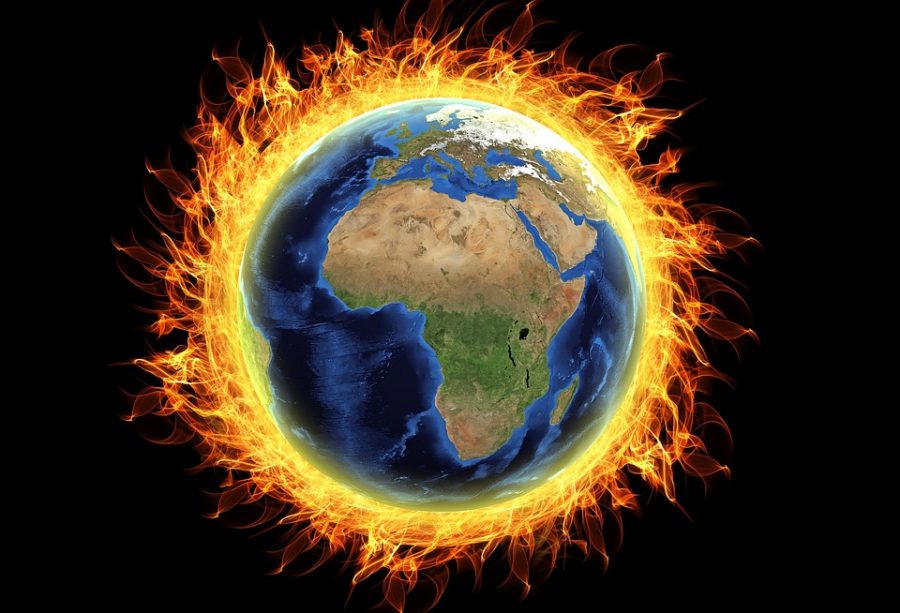2018 summer heat wreaks havoc across the globe
POSTED September 11, 2018
Another summer season is winding down; another year is almost past. Yet, any occupant of the world can tell you that June, July and August of 2018 were robust with abnormalities and foreshadowing of what the world may become. From floods in Japan, to trade routes in Russia, to toxic algae in the Baltic Sea and Florida, to wildfires and new bans in California, every corner of the planet was impacted by global warming. Without change, it is likely that this trend will only increase throughout the years.
Throughout late-June and mid-July 2018, Japan was bombarded by a series of torrential rain storms that led to intense flooding throughout the country and more than 200 people’s deaths. According to Junko Ogura and Joshua Berlinger at CNN, “Much of the rain fell over a mountainous region and then funneled down, causing heavy flash flooding.” As a result, many of the casualties were due to landslides. Terrified people were forced to abandon their homes or hide on their rooftops in attempts to avoid the harsh flooding and landslides: the effect of having 50% more rain than the average July in Japan. The cause? According to Bob Berwyn at Insideclimate News, “Today’s global atmosphere — 1 degree Celsius warmer than 100 years ago — holds much more moisture that can be delivered by regional storm systems.” To summarize, as the air holds more moisture, the world will experience more rainfall.
Additionally, global warming affects the melting of water just as much as the creation of it. This summer for the first time in recent history, melting ice ways above Russia have opened a northern sea trade route and a northwest passage, allowing faster trade among the United States, Europe and Asia. It is expected for the ice to melt even further as global temperatures rise; accordingly, more trade routes will open in the next decade. The shorter trade routes ironically cut shipping time, costs and emissions while emissions are part of the problem that opened the trade routes in the first place. As such, even though faster sea routes may seem like a positive thing, the negative cause behind it may be too much to ignore.
Furthermore, organisms who call the water their home may exist as a result of this summer’s global warming as well. The warm water has created the perfect environment for potentially toxic blue-green algae in the Baltic Sea, but it may contain cyanobacteria — oxygen-producing organisms who, when in large numbers, threaten wildlife around them. According to Dave Mosher at Business Insider, “Too many algae can overload waters: as they die, other bacteria eat them and use up oxygen in the water. This can create oxygen-depleted dead zones where ‘organisms cannot survive.’” Victims of such dead zones can be anything from fish, to shellfish, to the recent case of dozens of deceased whales near Alaska. To make a bad situation worse, cruise ships are, well, cruising by and disposing of their waste in the algae-infested water in a manner that actually feeds the algae and encourages growth. Other sources fuel the blooms as well, including agricultural runoff, fertilizers and more fresh water due to melted ice and global warming.
Why should you care? The recent heat wave is affecting people on a daily basis in the United States as well. Since June 2018, Florida has been experiencing a similar blue-green algae bloom to that of the Baltic Sea, but Florida’s bloom is in Lake Okeechobee. As if that wasn’t enough toxicity for one state, the Sunshine State is also still dealing with a deadly red tide along the coast that has killed 115 manatees and 350+ sea turtles since October 2017. Although the cause for the red tide is mysterious, scientists have concluded that the blue-green algae in Lake Okeechobee thrive thanks to agricultural runoff, excess nutrients in the water and the opportune warm temperature that is the result of global warming. According to Kimberly Miller at Palm Beach Post, “…a warming globe will mean more days with algae-friendly temperatures…” And, more toxic algae means more casualties.
Across the country, California has been experiencing troubles opposite to that of Florida: fire. Due to the recent wildfires in California caused by dry forests and excessive heat, specifically before the current wet spell we are experiencing here in Sioux Falls, SD, the allergies of the people around me have been off the charts. With my grandfather, my mother and some of my closest friends chronically sniffling and rubbing red eyes ever since the smoke from the wildfires began to drift northeast from California, it is hard to imagine the devastation and toxicity in the air for those near the fires.
Luckily, California has been attempting to halt — or at least lessen the blow of — the unforgiving hand of global warming through green practices. Cities like San Francisco have been banning disposable plastic straws, which lessens the production of single-use plastics and the carbon emissions associated with such activities. Additionally, “In August 2014, California became the first state to enact legislation imposing a statewide ban on single-use plastic bags at large retail stores. The bill also required a 10-cent minimum charge for recycled paper bags, reusable plastic bags, and compostable bags at certain locations,” according to the National Conference of State Legislatures.
Don’t be fooled; cities and states do not need to enforce green actions; you can take the initiative to participate in lessening your carbon footprint. Carpool, use reusable bags, turn the heat down this winter. Make a difference in your own way so that the heat does not continue to rise next summer and create an even larger natural disaster or even more casualties than it already has.






